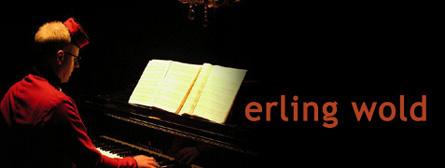First, the tragedy of his life: escaping from Nazi Europe, the loss of his friendly European audience, the fear that he had misspent his musical talents in Hollywood, the heart attack, his late rebirth as a true composer only to be felled by cancer of the stomach. Maybe not the ne plus ultra of the standard composer story, but a romantic tale nonetheless. Second, the published letter from Thomas Mann rejecting his request for a foreword but providing one through his rejection. Third, the book itself, starting with a long apologia for a naive modernism in music, a modernism of the immediate post-war, the acceptance of chromaticisms and pantonally or polytonally stretched harmonies in the harmonization of some standard chorale melodies, the now familiar explanations of how the standard harmonic rules did a pretty piss-poor job of explaining the triple pedal tones and atonalities of presumed common-practice music. I remember these arguments as so important in my youth, and the arguments, though true, are now just quaint, e.g.:
So far it may be concluded beyond any discussion that no sound, considered by itself and detached from any context, can under any circumstances be other than neutral and meaningless, just as no letter of the alphabet can be anything but neutral and meaningless. To divide any kind of sounds, be it tones, intervals or harmonies, into one category of consequences per se – white sheep – and another one of dissonances per se – black sheep – is as absurd as it would be to divide the letters of the alphabet into consonances and dissonances.One wishes that the belief in witches and evil demons really had been set aside, especially by likely voters, but luckily the coddled pets have been set aside, in large part, and now we live in a world where a puzzled Matt Ingalls can say to me during one of my digressions on intonation: "are we talking about pitch?" But back then, in my youth, such now quaint concerns were important. I remember also Jim Tenney's lovely book that considered the changing aspects of the terminology itself: A History of 'Consonance' and 'Dissonance'
The sooner we discard these two coddled pets of theory, the sooner we will discard with them an unending source of confusion. The future will look back at this doctrine of consonances and dissonances with the same pitying smile which we bestow upon the once-upon-a-time belief in witches and evil demons living inside certain individuals.
But I wonder: are they still teaching the harmony and counterpoint which, even before I was born, was already ridiculous and long discredited? Googling around for Musical Composition curricula at our popular universities, the search results returned oh-so-quickly seem to indicate that they are. Even Schenkerian Analysis, for the sake of Pete. One of my favorite quotes on this pseudo-scientific balderdash, which should have found its way to the rubbish heap along with water divination by crooked sticks, is by Fred Everett Maus who, in his article Sexual and Musical Categories
Schenker's creation of an elaborate tonal theory in response to post-tonal music resembles, to some extent, sexologists' back-formation of the concept of heterosexuality as a complement to their new concept of homosexuality. In both cases, a conceptualization of the normative or unmarked category follows awareness of an alternative. Schenker's attack on some music as unnatural recalls, of course, similar attacks on homosexuality.Here, here. Let us please put an end to the teaching of rules created by wannabe prescriptivists who find themselves in a world now scarily unfamiliar, which would lead, if applied vigorously, to the creation of only the most normative (read bland) and uninteresting of musics, even for those who believe that music died in one or the other of those fin-de-siècle brothels or absinthe parlors.






No comments:
Post a Comment